Sea Otters Of Alaska
An Earthwatch Project
Introduction * Travel * People * Camp * Otters * Scenery * Animals * Diary * Links *
Otters
This is what we came here for. Enhydra Lutra. Less related to the river otters, more closely related to weasels.
One day we did a census of the two arms of Simpson Bay, our study area. In a space roughly six miles long - approximately the size of Coniston Water in Cumbria, England - we counted 250 animals.
For part of the time we surveyed otter behaviour. The boat would approach an otter, and we would note its position using GPS, the time, the weather and what it was up to. If the animal was diving for food we would time its dives and try and see what it came up with. We would hear them noisily crunching shellfish.
We saw plenty of mothers with their pups. At this time of year most pups are swimming freely with their mothers, but that didn't stop mum grabbing junior and diving if we got too close. Mum would dive deep for food and the baby would follow, but normally popped up well before she returned with the food. A few noisy 'eeeek' calls from baby would send mum scurrying over.
There was one particular male who was very busy visiting females in the bay. He would cruise over to a female, check her out, and normally get short shrift, especially if she had a pup to look after. He'd brush himself down and head off to the next, grooming his fur as he went.
Other otters would just be sleeping peacefully on the surface, or grooming their fur. We'd see them on their own or in small groups. Sometimes one would dive to avoid us and surface almost under the boat, to dive again with that startled look on its face.
For photo-identification purposes, Randall was taking photographs of the otters using a Nikon camera and a 400mm lens. He couldn't get the latest digital Nikon camera due to supply problems from Nikon, so he was shooting on film. At every shot LauraLee would note the time, position, and shot number while I was using laser-ranging binoculars to get the distance to the otter. From this information Randall hoped to build a database of otter face pictures for recognition purposes. The distance information helps work out the size of the otter. All this information was supposed to go into a computer database at camp but because of the problem with the digital camera all this will have to wait until the film is developed.
Waking up in the morning of the first day to see an otter swimming in the Cove was a delightful experience. But early one other morning we were woken in our tents by the sound of a young otter. We could hear a splash as mother dived, then the 'eeeeek, eeeeeek, eeeeek' of the baby, followed by another splash as mother returned. It was 4am. None of us complained.
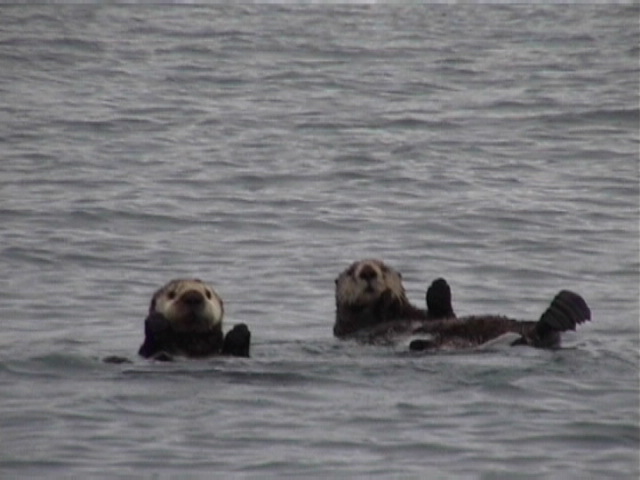
Mum and Pup wave.
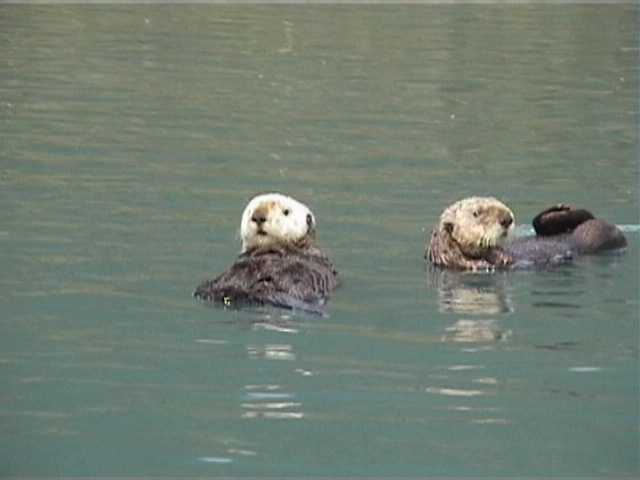
Mum keeps an eye on baby.
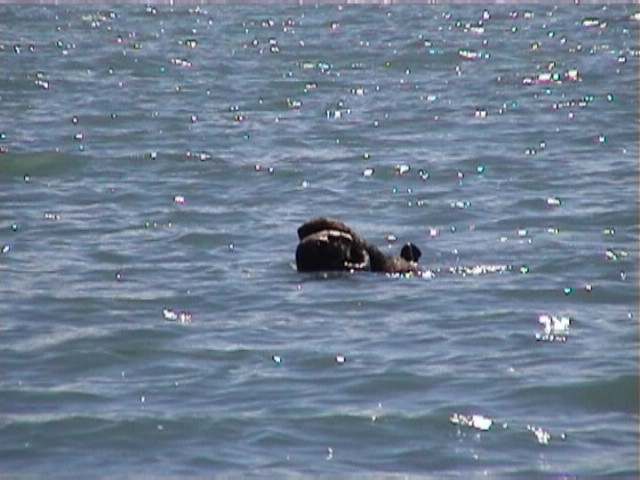
Mum carries pup in the sparkling sea.
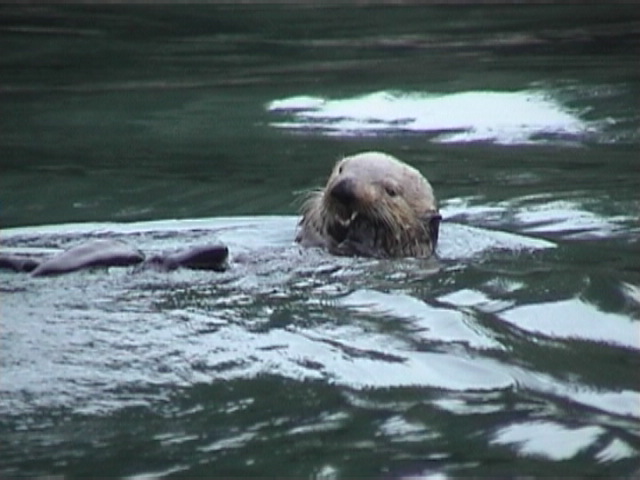
An otter gets his teeth into mussels.
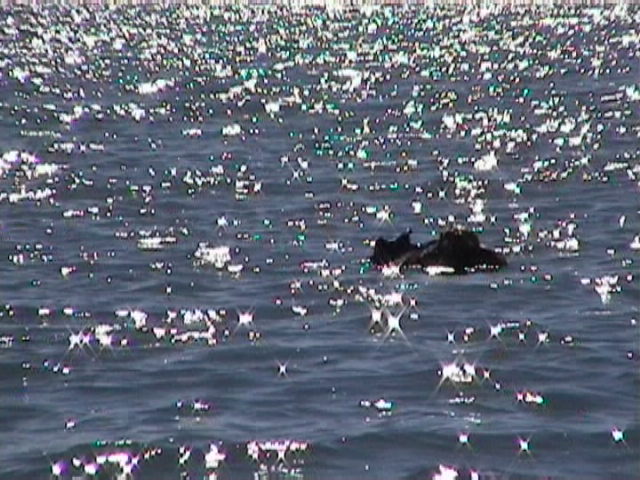
An otter rests in the sun.
Pages by Baz